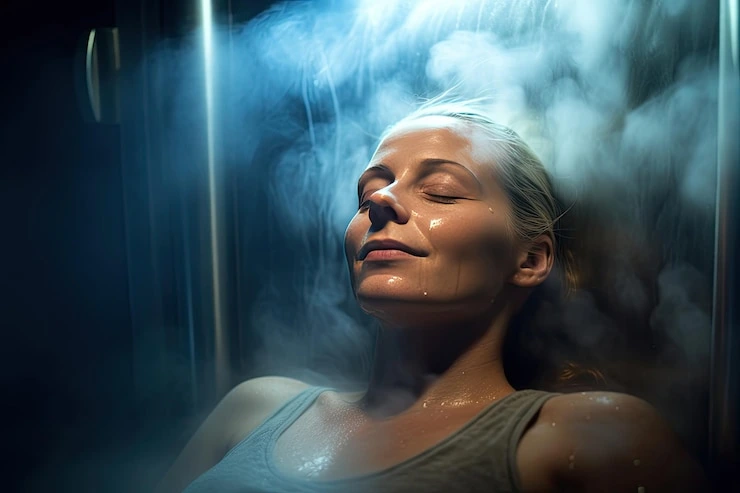Infrared Sauna Etiquette: What Should You Wear?
As an increasingly popular way to relax and improve health, infrared saunas are attracting many people seeking to boost wellness, reduce stress, or simply enjoy the warmth. Unlike traditional saunas that heat the body using hot air, infrared saunas use infrared rays to directly heat the body, offering a unique experience. However, for newcomers or those unfamiliar with sauna culture, a common question arises: What should I wear while enjoying an infrared sauna? This concerns not only personal comfort but also etiquette and hygiene in public settings.

This article will detail the basic etiquette for infrared saunas, especially regarding attire, helping you to be considerate and respectful while enjoying the benefits of infrared saunas.
General Sauna Etiquette: Creating a Comfortable Shared Space
Regardless of the type of sauna you choose, some basic etiquette rules are universal, aimed at ensuring all users have a pleasant and relaxing experience. Before entering an infrared sauna, remember these points:
- Shower Before Entering: This is one of the most fundamental sauna rules. Showering washes away sweat, oils, lotions, or perfumes, keeping the sauna clean and hygienic and preventing odors. A clean body also absorbs infrared heat better.
- Bring a Towel: Even if you plan to go nude (in permissible private settings), it's recommended to bring at least one clean towel. A towel can be placed on the bench to absorb sweat and prevent direct contact with the wooden benches, maintaining hygiene. In public saunas, a towel is essential for covering up.
- Respect Others' Space: Saunas are shared spaces. When entering, choose a spot that maintains an appropriate distance from others, avoiding crowding and disturbance. Keep quiet, lower your voice to a minimum, allowing everyone to enjoy a peaceful moment of relaxation. Electronic devices like phones are generally not recommended, as they can disturb others or be damaged by the heat.
- Stay Hydrated: Saunas cause significant sweating, making hydration crucial. Drink plenty of water before, during, and after your sauna session. You can bring a non-glass water bottle into the sauna and take small sips.
- Listen to Your Body: Don't force yourself to stay in the sauna for too long. Sessions of 15-30 minutes are generally recommended, especially for beginners. If you feel dizzy, nauseous, or any discomfort, leave immediately.
- Clean Up After Leaving: Take your personal belongings with you when you leave, and place used towels in the designated bin (if provided).
Infrared Sauna Attire Guide: Comfort, Health, and Decency
So, specifically for infrared saunas, what should you wear? This largely depends on the setting (public or private) and your personal comfort level.
Ideal Choice (Private Setting): Nude
From a health and effectiveness perspective, many experts and sauna enthusiasts recommend going nude in a private sauna. When the body is bare, infrared rays can directly and evenly reach the skin surface, promoting sweating and blood circulation for optimal therapeutic effects. Being nude prevents clothing from hindering sweat evaporation, allowing the skin to breathe freely and dissipate heat, preventing overheating. Of course, this only applies if you are using the sauna alone or sharing it with a trusted partner who is also comfortable with nudity.
Public or Shared Settings: Towel or Loose Cotton Clothing
In public saunas, gym facilities, or when sharing a home sauna with unfamiliar guests, wearing appropriate covering is necessary for politeness and hygiene.
- Towel: This is the most common and recommended option. Bring one or two clean, large towels. One can be wrapped around your body (waist or chest) for necessary coverage; the other can be placed on the bench. Choose absorbent cotton towels.

Figure: Wrapping the body with a towel is common practice in public saunas - Loose Cotton Clothing: If you prefer not to wrap yourself in a towel, opt for loose, lightweight cotton clothing, such as cotton shorts and a t-shirt or tank top. Cotton fabric is breathable, absorbs sweat, and doesn't interfere with infrared penetration. Ensure the style is loose to allow for air circulation and sweating.
- Swimsuit: In certain contexts, such as saunas near pool areas in hotels or gyms, wearing a swimsuit might be acceptable or even required. However, note that swimsuit materials (usually synthetic fibers) may not be as breathable as cotton, and a wet swimsuit can be uncomfortable in a sauna. If you choose a swimsuit, make sure it's clean.

Figure: Swimsuits may be permitted in sauna facilities near pools
Footwear:
Inside the sauna, it's recommended to go barefoot or wear clean shower sandals (flip-flops). In public saunas, wearing sandals helps prevent contact with potential bacteria or fungi on the floor. Sandals are also useful when moving between the sauna, changing room, and shower area.
Sauna Hat (Optional):
Some people like to wear a sauna hat (usually made of wool felt). A sauna hat can protect hair and scalp from high temperatures and help maintain a more stable head temperature, potentially making you feel more comfortable and allowing you to stay in the sauna slightly longer. However, it's not essential.
What to Avoid Wearing in an Infrared Sauna: Safety and Health Considerations
To ensure safety and the best sauna experience, the following types of clothing or items should be avoided in an infrared sauna:
- Tight or Restrictive Clothing: Avoid wearing tight sportswear, compression garments, or any clothing that restricts blood circulation and sweating. The purpose of a sauna is relaxation and detoxification; tight clothing hinders this process.
- Non-Breathable Materials (PVC, Rubber, Plastic): Absolutely do not wear so-called "sauna suits" or "sweat suits" made of PVC, rubber, or similar plastic materials. These materials are not breathable, prevent sweat evaporation, and can easily lead to overheating, dehydration, or even heatstroke. Additionally, these materials might release harmful gases or melt at high temperatures.
- Synthetic Fibers (like Spandex, Nylon): While not as dangerous as PVC, many synthetic fibers (like spandex/Lycra, nylon used in tight sportswear) are far less breathable and absorbent than cotton, potentially affecting comfort and sweating efficiency.
- Clothing with Metal Parts: Avoid wearing any clothing with metal zippers, buttons, rivets, or decorations. Metal gets extremely hot at high temperatures and can burn the skin.
- Jewelry: Similarly, metal jewelry like rings, necklaces, earrings, and watches will become very hot in the sauna and must be removed.
- Dirty Clothes or Shoes: Never wear dirty clothes or shoes worn outdoors or during a workout into the sauna; this is very unhygienic.
Conclusion
An infrared sauna is a beneficial experience for body and mind. Understanding and adhering to the appropriate etiquette, especially regarding attire, allows you and others to enjoy it better. In summary, nudity is the choice for maximizing sauna effects in a private setting; in public, a clean towel or loose cotton clothing is a decent and healthy option. Always prioritize comfortable, breathable, and absorbent natural materials, and firmly avoid non-breathable, metal-containing, or tight clothing. Bring enough water, relax, and enjoy the warmth and vitality offered by the infrared sauna!
